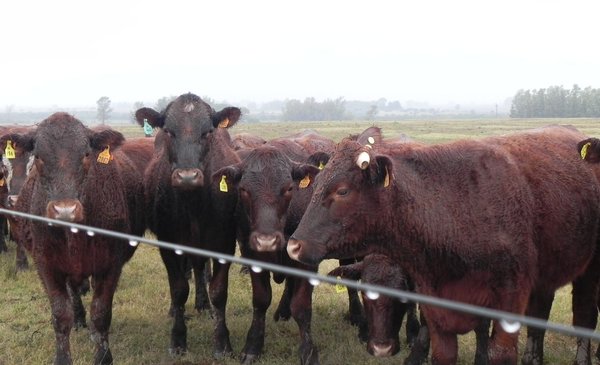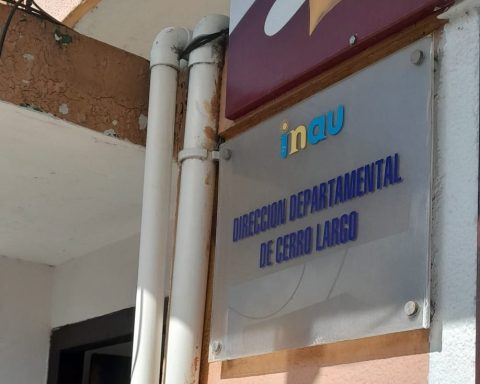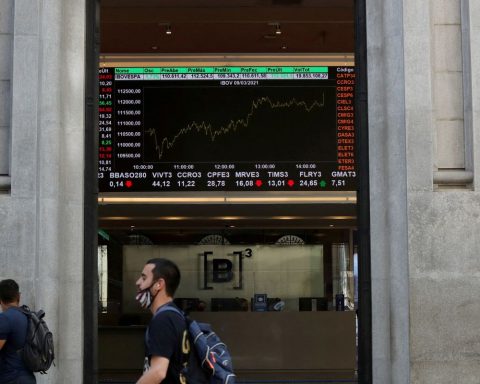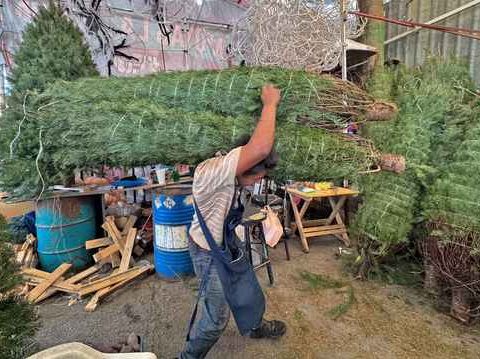The winter crops, with a sowing advance of 50%, will find better humidity conditions from now on, although the rains further delay the threshing of soybeans. For him cattle the rains are a breather that allows you to gain kilos and improve the conditions for breeding. The wool fell to its lowest price level since October 2022 due to a large supply of low quality.
Next, a look at the weekly closing in the markets of three of the main items of national agribusiness.
Grains Rally in Chicago
The very good rainfall records in the southwestern zone of Uruguay change the outlook for planting winter crops, improving the condition of the soil.
Although the late tasks of the summer harvest and the delivery of the farms for the new planting are still delayed, barley, wheat and rapeseed find better conditions in future.
The greater development of sowing occurs in rapeseed than in barley and wheat, with advances of almost 50% of the area.
In the Chicago market, grains closed on Friday before a long weekend in the United States with price gains, after a fairly balanced week, but which has not recovered what has fallen in previous weeks.
Ukraine remains a risky destination for ships and shipping companies avoid Black Sea portsso beyond the renewal of the agreement between Russia and Ukraine there are few shipments of wheat from the area, a factor that gives some support to prices.
The July Chicago wheat contract gained US$4.3 per ton for the week, closing at US$226.3, up 1.8%. The December position rose to US$ 237.9 with a weekly increase of 1.9%. The July soybean position advanced 2.4% during the week with a closing price of US$ 491.4. The November position added US$6.3 to trade at US$437.1 per ton, with a positive weekly balance of 1.2%.
Corn led the gains with 8.9% in the July position that closed at US$ 237.8 per ton and a 7% increase in the December contract.
In the local grain market, prices remained stable, with a ton of soybeans priced at US$434 in Nueva Palmira and US$412 for soybean contracts for the next harvest.
Malting barley remains at US$236, wheat at US$280 and rapeseed for export at US$380 a ton.
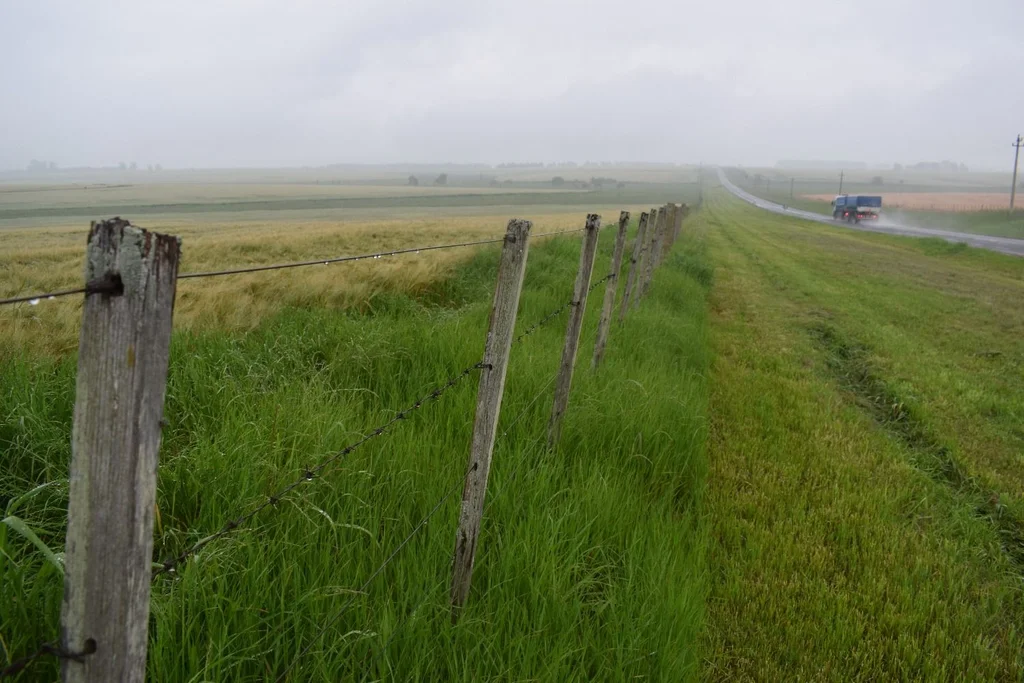
John Samuelle
It rained mainly in the south and on the west coast of the country.
The steer resists above US$ 4
There is an expectation that the rains –although irregular– will help set a price floor for fat cattle. The bulk of the corral work has already passed, although the industry does not press for pasture land and proposes lower prices.
There are producers who do not validate new adjustments and the fat steer is sustained between US$ 4 and US$ 4.10 per kilo in fourth scale. Supply is limited, though it’s unclear how much buying interest there will be going forward from the industry. In general, a drop in the level of activity is expected, with some plants that will issue licenses and stop operating in the coming weeks.
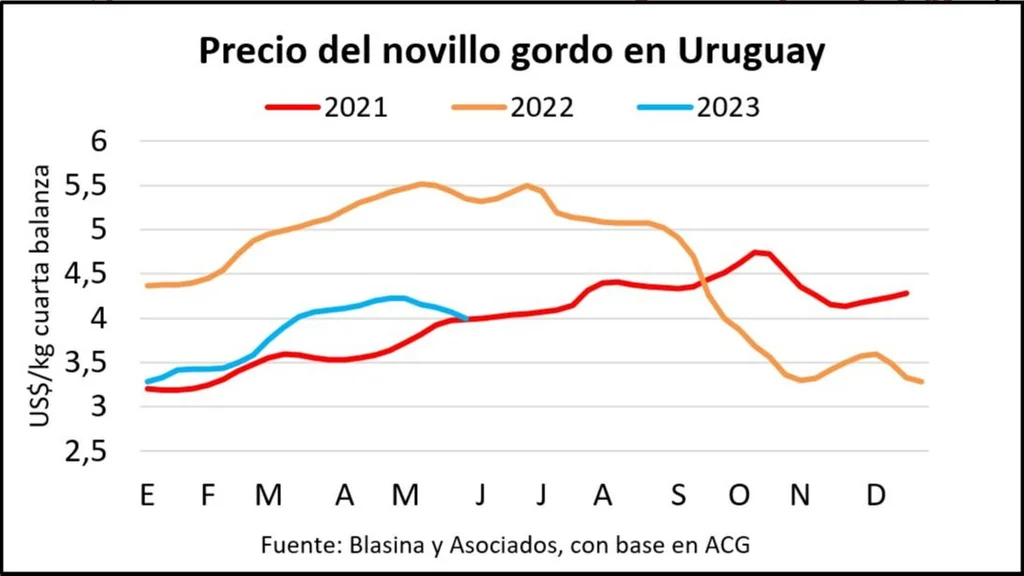
Some producers withhold their cattle to add a few kilos, predicting better prices, said Francisco Cánepa, from the Ruben F. Cánepa desk.
The market is more dynamic for the cow, with values from US$ 3.65 to US$ 3.85, with most of the businesses dealing with lower-end cattle.
There is a marked difference in prices between plants. Also in tickets, ranging from 5 to 12 days.
The cooling in foreign markets plays its part, with a cooling in prices and demand from Chinato what the operators experienced firsthand in the shanghai sial fair.
For now, the average value of the ton of beef exported in the last 30 days was US$ 4,578, the highest of the yeara value possibly sustained in 481 quota shipments to Europe at higher than average prices.
Autumn is taking a break with moderate temperatures, but pastures in general have not yet taken off.
“We are going to have a long post-harvest, where the corrals will continue to play a leading role,” said Carlos de Freitas, director of the Carlos de Freitas Rural Business desk and president of Plaza Rural.
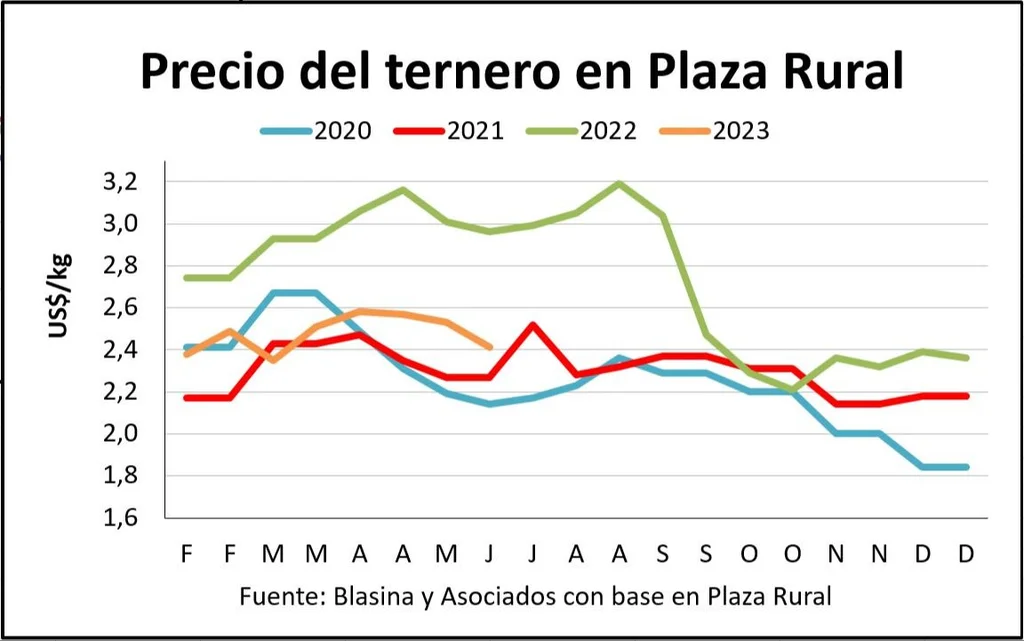
In the immediate, a rainy effect begins to be seen in the replacement market. Customers who showed caution on Monday and Tuesday, on Thursday or Friday they already had resolved to buy cattle.
“There are already farms for the countryside for which they are asking for prices that are not in the market,” commented Cánepa; a more pretentious offer, mainly for calves, heifers and some pregnant belly. Going forward, the operator foresees a lower replacement offer.
In Plaza Rural and Lote 21 there were moderate adjustments this week. “Breedlings, wintering cows and trained steers were perhaps the most advantageous categories for buyers,” said de Freitas.
In the two screens, the calves averaged US$ 2.41 per kilo, a drop of 4.6% in Plaza Rural compared to the previous auction, and 4.5% in Lot 21.
The sheep are still in an adjustment process. “In the north there began to be a kind of stock liquidation, mainly in sheep farms that offer thick wool, many people are becoming detached because they have not been able to place the wool,” said Cánepa.
In refrigerator businesses, weight restrictions are set and entries are on the two-week axis. Prices are around US$3.30 for lamb, US$3.05 for sheep and US$2.77 for sheep.
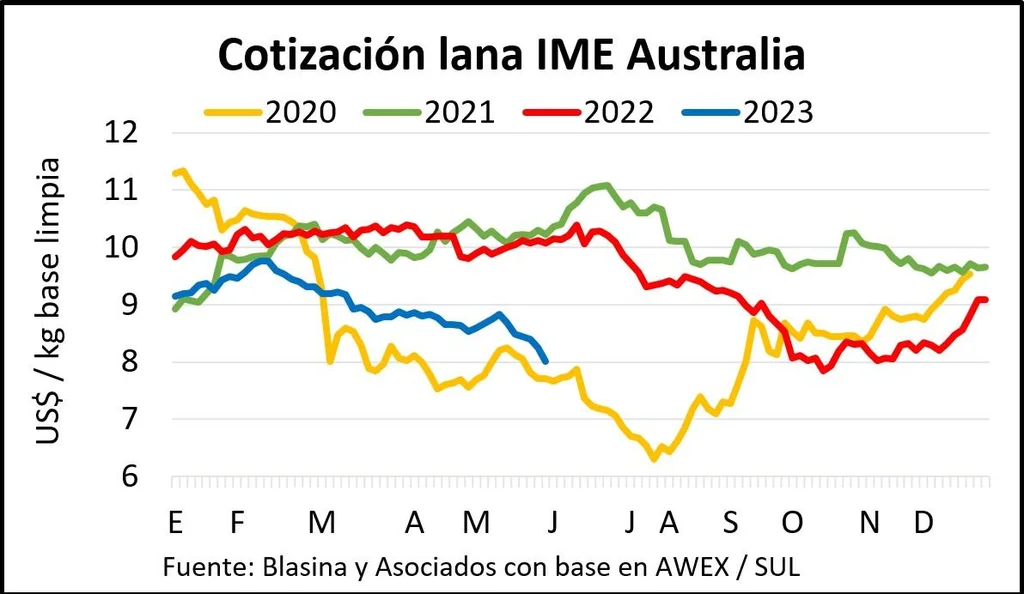
Wool at eight-month lows
The international price of wool fell to its lowest value since mid-October 2022, stretching a downward streak as a result of the bulky supply and the low quality of the product. It is difficult for buyers to find the lots they are looking for in terms of resistance to washing, wick length and vegetable content.
May is by far the worst month of the year for the wool business. In the last week, the Eastern Markets Indicator (IME) fell to US$ 8.01 per clean base kilo, a 4.6% drop in the price and a decline of 39 cents.
This week the performance of the values is attributed exclusively to the distance between the buying and selling points, since there was no influence of the exchange rate. The Australian currency depreciated slightly. In local currency, the weekly drop was 49 cents.
The downward correction was more significant in the finer end of the offer (Merino wool less than 20 microns) and less abrupt in crossbreeds of 25 microns and up.
With this price scenario, businesses at the local level are paralyzed. Neither the Uruguayan Secretariat of Wool (SUL) nor the Union of Wool Consignees and Auctioneers reported any completed deals.
For Corriedale yarns from 26 to 28 microns, between US$0.70 and US$0.80 per kilo of dirty base is offered.
The local industry is stocked with good quality wool and there is also a lot of wool in the hands of producers and consignees: some 40 million kilos, which is equivalent to a long harvest and a half, traditionally 25 million per year.
In addition to the market situation – uncertainty in Europe, slowness in the reopening of China with structural changes in the textile industry – local operations are affected by lack of water in some industries, said Antonella Riani, head of SUL markets, this Friday on Country Radio.
